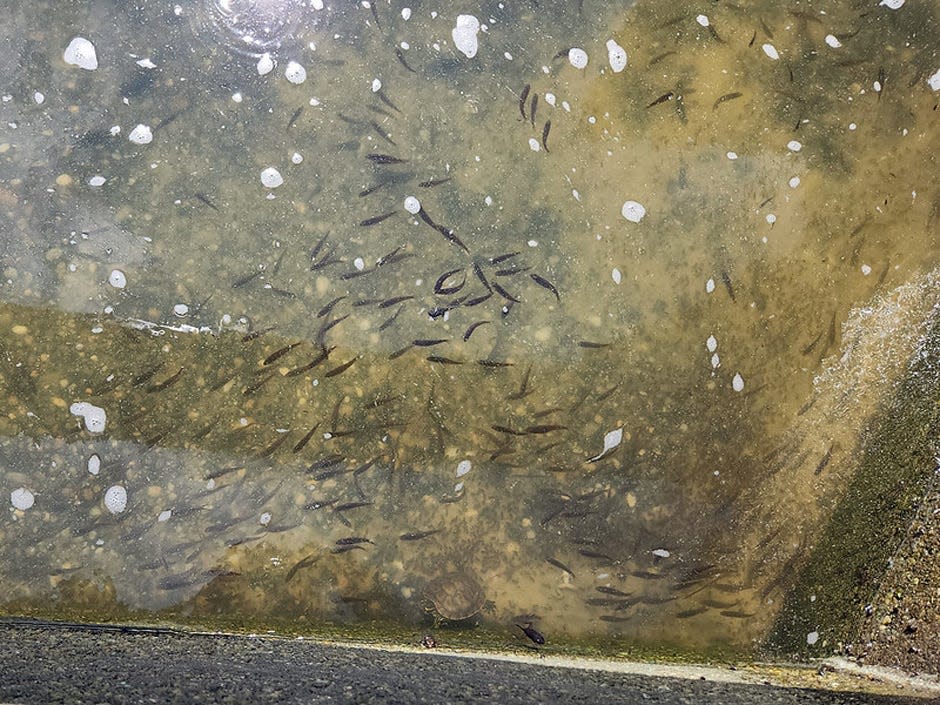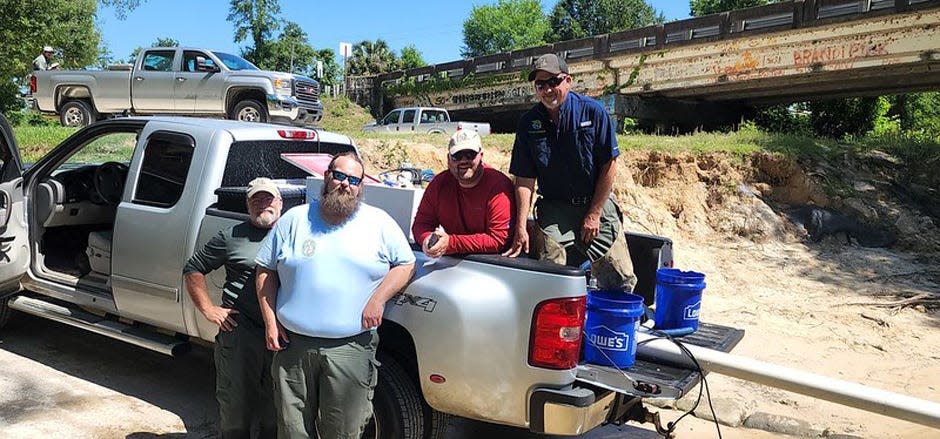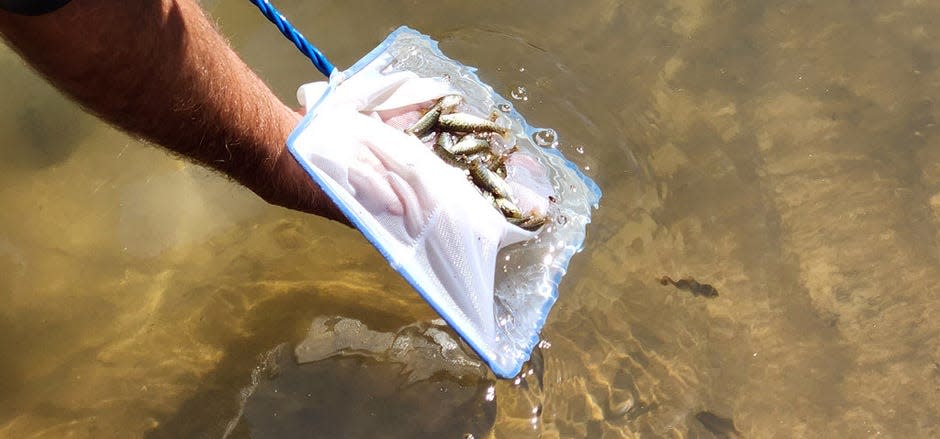FWC reaches major milestone with release of genetically pure hatchery-raised shoal bass
TALLAHASSEE — Freshwater fisheries researchers and managers with the Florida Fish and Wildlife Conservation Commission (FWC) successfully released 3,300 hatchery-raised shoal bass fingerlings (young fish) into the Chipola River in May.

Fishing crew gets big catch: 'A dang pig': Destin fishing crew reels in massive 800-plus pound bluefin tuna Easter weekend
Tips from Florida Fish and Wildlife Conservation Commission: FWC: Nesting season is here for sea turtles and waterbirds
In 2018, Hurricane Michael depleted more than 90 percent of the shoal bass population in the Chipola River. As a direct management action following the hurricane, the FWC passed an executive order that suspended harvest and possession of shoal bass. In 2019, FWC staff recommended this regulation be adopted into rule to support ongoing conservation efforts for this species. Currently, harvest and possession of shoal bass in the Chipola River and its tributaries remains prohibited.

“This project embodies the necessity for strategic long-term thinking in conservation and the vital role it plays, not only in word, but also in being able to implement these actions,” said Chris Paxton, Regional Fisheries Administrator for Florida’s northwest region. “Thankfully we had already been working on how to spawn these fish in case ‘something happens one day’ to this isolated population. Well, it happened in the form of a Category 5 hurricane.”
Conservation need

Shoal bass are one of four of Florida’s native black bass species, and this effort marks the first time genetically pure shoal bass have been successfully raised in an FWC fish hatchery. Shoal bass are also a Florida Species of Greatest Conservation Need, which refers to native animals whose populations are of concern and are at risk or declining. The goal of raising and releasing these fish is to enhance the wild population of shoal bass to help maintain the population’s genetic purity and aid in the long-term conservation of this unique species of Florida black bass.

The unique effort is a result of collaborative work by dedicated staff from the FWC’s Division of Freshwater Fisheries Management and Fish and Wildlife Research Institute. The shoal bass were raised at FWC’s Blackwater Fisheries Research and Development Center near Holt.
“Shoal bass have very specific habitat needs and it is a major milestone to successfully spawn and grow these fish to a size suitable for stocking,” said Bob DeMauro, Hatchery Manager at FWC’s Blackwater Fisheries Research and Development Center. “It is an incredible success to raise these riverine fish in a still-water hatchery pond when they are used to flowing water and limestone shoals in their natural habitat.”
FWC’s freshwater fisheries biologists will continue to monitor the Chipola River shoal bass population and evaluate the contribution of these stocking efforts through genetic testing.
“This is a great example of research and management partners working together to protect and conserve this native black bass species,” said Andy Strickland, freshwater fisheries biologist with FWC’s Fish and Wildlife Research Institute.
The Chipola River is the only waterbody in Florida with a known naturally reproducing shoal bass population. This spring-fed river originates just north of Marianna, flowing south for 95 miles through Jackson, Calhoun and Gulf counties where it joins the Apalachicola River.
For more information, contact the FWC via myfwc.com at https://bit.ly/3NmmFTq.
This article originally appeared on Northwest Florida Daily News: FWC releases genetically pure hatchery-raised shoal bass

